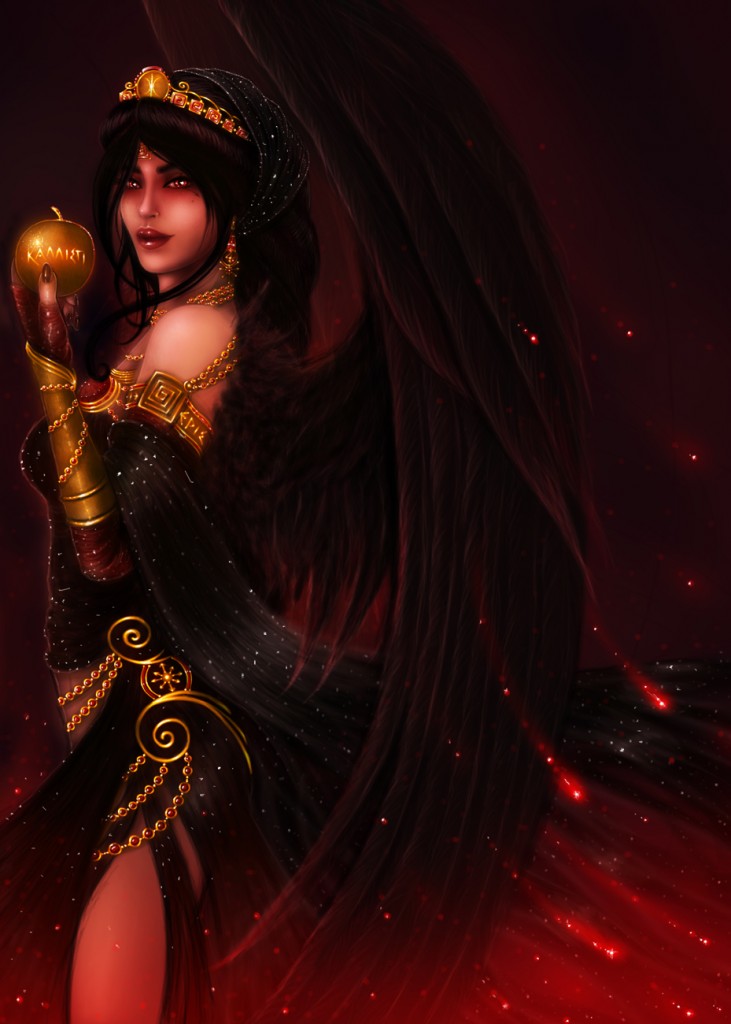
Get a print copy of April’s Eris of the Month, Hellenic Mythology – Eris, Goddess of Discord by EmanuellaKozas on DeviantArt.
Send us your Eris of the Month Club submissions (more info here) by using the form at the bottom of The MGT. page.

Get a print copy of April’s Eris of the Month, Hellenic Mythology – Eris, Goddess of Discord by EmanuellaKozas on DeviantArt.
Send us your Eris of the Month Club submissions (more info here) by using the form at the bottom of The MGT. page.
Here are my Five.
Discordian Ritual #1
They can be lump free, chunky, or smooth textured. Many of us perform Discordian Rituals without even knowing. Case in point: as a hirsute, dope smoking teen—long before my Discordian Pope-hood—I oft times visited Fresno’s Fashion Fair Mall, and above the urinal in a restroom there (a urinal can double as an irreligious altar) there was a chalk board with chalk on a string that allowed the user to scrawl lewd crudities as opposed to the walls of the stalls, such as “for a good time call…”
Anyway, with said chalk—and without premeditated thought—I wrote “Jesus is pregnant!”
This was Discordian Ritual #1.

Discordian Ritual #2
My second Discordian Ritual occurred once again in magical Fresno when a colleague and I ingested LSD and went out trippin’ into the streets of our fair city. At some point in our adventure, one of us said: “What if we saw a UFO right now, no one would believe us,” which made us laugh somewhat uncontrollably.
After uttering those immortal words, Eris called down a surreal squadron of psychedelic saucers which blew our minds.
This was Discordian Ritual #2—although I didn’t know I was a Discordian Society member at the time.
Hail Eris!
Discordian Ritual #3
Discordian Ritual #3 was also initiated by psychoactive substances, this time those crazy little mushrooms Eris transported to Earth.
The set-and-setting was out on the beach at Half Moon Bay when the spirit of The Monster Tamer entered my body and gave a blow by blow account of every monster he’d battled and destroyed—from Frankenstein to the Wolfman—to name just a few.
This was Discordian Ritual #3. (You really had to be there.)
Discordian Ritual #4
Discordian Ritual #4 occurred when I lived in an apartment in Clovis, CA, and sculpted a strange bust of a tormented little green creature with pointed ears named GLIB.
When I moved out, I left GLIB in an empty closet alongside a copy of The Book of Mormon, which though I didn’t know it at the time, was a very Discordian thing to do, and may well have lit up the pineal gland of who ever discovered GLIB sharing a closet shelf with Joseph Smith’s holy book.
Discordian Ritual #5
Discordian Ritual #5 actually occurred after I became a Discordian Pope when myself and some friends who didn’t realize they were Discordian Popes—but now understand that they may or may not be—conducted “The Fifth Degree Discordian Initiation Rite” in the parking lot of the fabled Brunswick Shrine bowling alley where Mal and Omar experienced the Revelation of Eris.
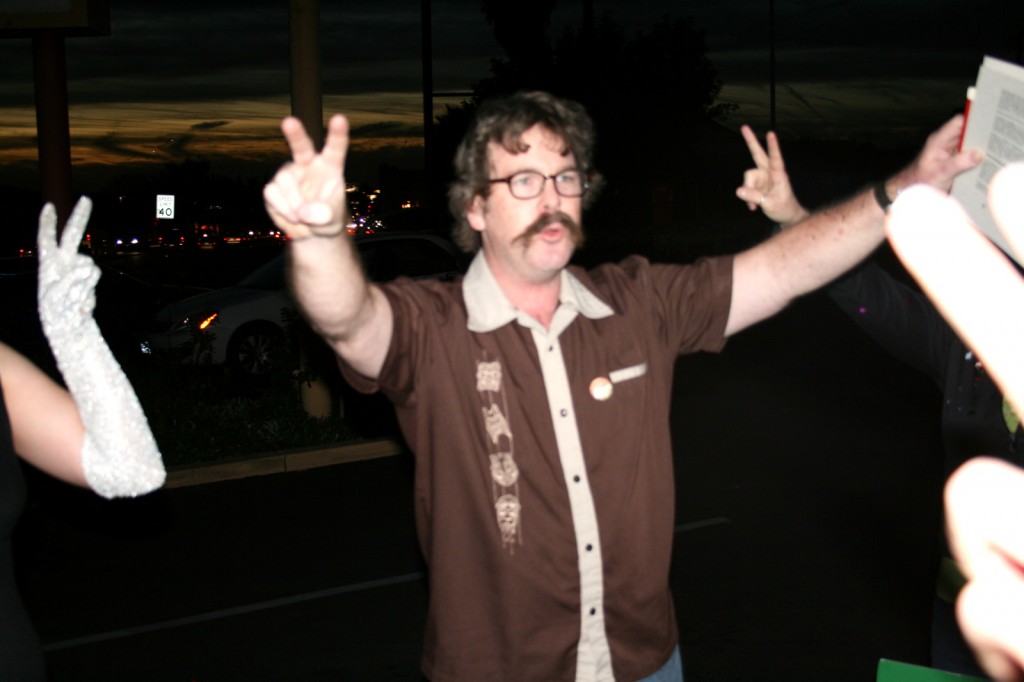
So there you have my Five Discordian Rituals.
I could probably name another 23, but not right now fnord.
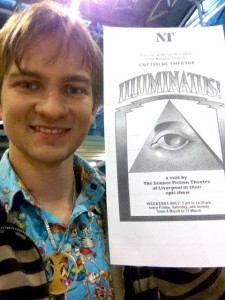
Discordianism is the most influential parody religion you’ve never heard of. However, the half-century old “joke disguised as a religion” is experiencing something of a resurgence, with events such as Daisy Eris Campbell’s Cosmic Trigger play and the ‘Find the Others Festival’ organized by a team of chaotic pranksters including Ben Graham.
Now that chaos is returning to the UK (in style!), I talk to Ben Graham to look back on the long strange journey it’s taken to get here. From the pop sensation that burned a million pounds, to the reclaim the streets movement, Graham tracks chaos from comics to the Cosmic Trigger play.
Chaos culture is coming to you;
here’s where it’s coming from.
In 2015 trend forecaster K-Hole made a bold prediction; the next big thing would be Chaos Magic. To their credit, they seemed to have their finger firmly on the pulse of the zeitgeist—bit by bit, Chaos seemed to start waking up. A sudden resurgence of interest in Discordianism—a chaos worshipping ‘joke religion’—saw multiple book releases from names such as Adam Gorightly and John Higgs. John Higgs also began to do a tour to promote the legacy of famous Discordian author Robert Anton Wilson. Robert Anton Wilson’s family regained copyright to his works and began publishing under the name Hilaritas press. Meanwhile his book Cosmic Trigger (Amazon) was adapted into a play by Daisy Eris Campbell, and a Discordian festival was announced in ‘a south Yorkshire woodland’.
Suddenly, Chaos seemed to be creeping out from nowhere. But of course it hasn’t come from nowhere—in fact, while Anarchy may get all the attention, Chaos in the UK has a long and appropriately complicated history.
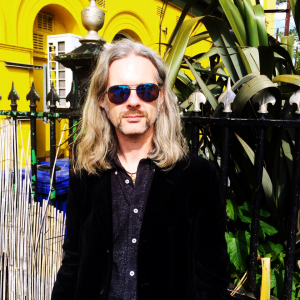
On a cold evening in London, I spoke to writer Ben Graham, an organizer of Festival 23 and author of A Gathering of Promises: The Battle for Texas’s Psychedelic Music From the 13th Floor Elevators to the Black Angels and Beyond (Amazon), who agreed to guide me through the strange trajectory of British Chaos.
I meet him at a pub up the top of Paddington Station. He has a kind of geeky manner to him, and that delightful British politeness that we see in Hugh Grant movies, shaggy sandy hair framing a friendly face well speckled with rough stubble.
From Magic Manual to Comic Book
Ben starts his tour of the chaotic in his childhood; his first forays into these concepts of chaos came as a child reading comic books. Specifically, a hugely popular series called 2000AD—the series that spawned the character Judge Dredd.

“Basically 2000AD was a British kids comic starting 1977,” he says. “It’s still going today. It started as a fairly kind of violent high-end kids comic with science-fiction themes off the back of Star Wars… it was also a primer in Chaos Magic for a few years there because the guys who were writing it were slipping all this stuff in. Alan Moore, you had Grant Morrison very into it. You also had people who never really got out—like Pat Mills did a comic strip called Slaine which had a lot of Celtic mythology—very into magic ideas. I would have been reading it as a kind of 15/16 year old.”
Grant Morrison, would go on in the late-80s to publish a strip named Zenith, notable for its themes of Chaos Magic. Here, he took influence from Chaos Magician Peter Carroll, the founder of the Chaos Magic organization Illuminates of Thanateros. The inspiration was quite overt—too overt perhaps—at one point Carroll threatened legal action against Morrison.
“You had a kind of a mainstream kids comic where three out of five strips in it would be kind of Chaos Magic primers for kids,” Ben tells me. This early transferal of Chaos Magic ideas from Carrol’s somewhat obscure special interest publications, into mainstream youth popular culture was perhaps one of the first big steps that Chaos took into the mainstream of the British public’s imagination.
Chaos Magic has another notable influence; the ostensibly jocular religion of Discordianism. In his work Oven-Ready Chaos Phil Hine describes this influence:
An important influence on the development of Chaos magic was the writing of Robert Anton Wilson & co, particularly the Discordian Society who revered Eris, the Greek goddess of Chaos. The Discordians pointed out that humor, clowning about and general light-heartedness was conspicuously absent from magic, which had a tendency to become very ‘serious and self-important’. There was (and to a certain extent remains) a tendency for occultists to think of themselves as an initiated ‘elite’ as opposed to the rest of humanity.
Unlike the variety of magical systems which are all based in some mythical or historically-derived past (such as Atlantis, Lemuria, Albion, etc), Chaos magic borrowed freely from Science Fiction, Quantum Physics, and anything else its practitioners chose to. Rather than trying to recover and maintain a tradition that links back to the past (and former glories), Chaos magic is an approach that enables the individual to use anything that s/he thinks is suitable as a temporary belief or symbol system. What matters is the results you get, not the ‘authenticity’ of the system used. So Chaos magic then, is not a system—it utilizes systems and encourages adherents to devise their own, giving magic a truly Postmodernist flavor.
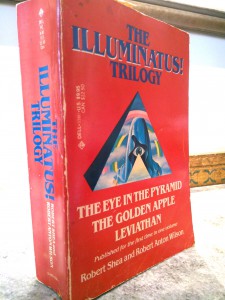
Robert Anton Wilson was himself one of the original Discordians, and is probably single-handedly the person most responsible for the spread of Discordian ideas through the series of books he wrote with his friend Robert Shea—The Illuminatus! Trilogy (Amazon). This strange trilogy featured Discordians fighting against the evil plans of the Illuminati, and proposed that nearly every conspiracy theory popular at the time of writing was simultaneously true.
Epic Productions: Illuminatus! on Stage and the KLF
The event that bought Wilson’s ideas across the pond from the USA was the adaption of his Illuminatus! Trilogy into a play in 1977. Such a feat seemed impossible to do; luckily the discovery of the trilogy came to Ken Campbell; a man who regarded nothing as worth doing unless it was impossible. He was also the father Daisy Eris Campbell, who recently produced the play of Wilson’s book Cosmic Trigger.
Campbell was a theatre legend. His production of Illuminatus! into a play was a testament to his drive and creativity—the final presentation was performed as five acts across five nights, followed by an epic 10 hour presentation of all acts together. The opening date—November 23, 1976—took advantage of the Discordian obsession with the number 23.
As part of Ben’s writing career, he had the opportunity to interview one of the participants in this epic scale caper—Bill Drummond, who had developed the visionary set design of the play, creating surreal sequences with sets out of proportion to the actors, and using innovative techniques to position audiences in surprising ways, such as presenting actors horizontally to allow for a birds eye view of a tarot reading.
“So when I interviewed him, it wasn’t long after Ken Campbell had died,” Ben tells me. “So I wanted to ask him about that. And he was very effusive about the influence Ken Campbell had had on him when he worked on the 1977 production of Illuminatus! at the Liverpool Theatre and how he introduced him to those book and those ideas. Also I didn’t realize that Ken Campbell had been a lifelong friend. He would go to his house, keep in touch, for dinner, stayed like a friend with his family, more or less up to the point where he died. He said he was like a friend, not just a mentor from way back. He’d lost somebody who was an important guiding light.”
“He was always working in the now, he wasn’t thinking in terms of making films, writing books; it was always like, the event, what’s actually happening in the room,” Graham’s 2010 Quietus interview quotes Drummond as saying. “That was one of the big things I learnt from Ken Campbell. And taking risks, and just making things happen. That continued to inspire me about what he does, what he did do, right up until he died. And so I always got a lot out of getting together with Ken Campbell, or going to see a Ken Campbell production.”

Drummond is actually more famous for his role in music than for his role in the Illuminatus! play. He, together with Jimmy Cauty, founded The KLF, a sample based pop outfit. Their original name was The JAMS, a name alluding explicitly to a group in Wilson and Shea’s Illuminatus! Trilogy.
By the time Ben had had his interview, the band had been long broken up. They ended their career in an extraordinary way—by announcing their retirement, shutting down their record catalogue and traveling out to a small island on Jura to burn the money they made—an entire million pounds. (For those interested, aforementioned author John Higgs has brought this strange tale back into the spotlight with his book, The KLF: Chaos, magic and the band who burned a million pounds (Amazon.)
When the band first burned the money, they followed up with a tour where they invited audiences to ‘tell them’ why they burned the money. Ben was in attendance at one of these nights in 1995, and detailed it for his fanzine News From Nowhere.
“They came to Bradford where I was staying and did a showing, a Q&A. I took part in the Q&A, so I had some interaction with the guys but it wasn’t an interview. I did write up the piece. I kind of tied it in with a lot of Discordian Illuminati type thing to sort of put my spin on why they’d done that. It did kind of get back to the KLF chaps, and I gathered that they thought that that was kind of the best piece on it at the time.”
Ben later sends me a copy of it. It is a good piece. The mood of the gathering is palpable, an audience frustrated at being asked questions rather than being given answers, in parts angry, congratulatory and indifferent.
“It was at the One in Twelve Club, Bradford, which was the kind of Anarchist underground club there, so the quotes from the people watching it were that these were kind of rich pop-stars that were burning money that could have gone to a good cause—that it was kind of an indulgent, decadent act. The guys, when they were talking, they weren’t really trying to defend themselves. Their approach was that they were trying to say, ‘we’re trying to find out why we did it, you tell us why we did it, we want to hear your stories,’ so they were being a bit of a kind of blank canvas.”
At one point Graham describes some of the outbursts of the crowd, describing the reaction of a group of punks unhappy that no explanation would be forthcoming.
“How do you get rid of piles,” they demand, amidst assorted jeers and heckles.
“Grab ‘em in your hand, right, and shove ‘em back up yer arse and hold ‘em there,” demonstrates Bill.
“It was a hostile night for them I think at the One in Twelve. My take on it; I suppose I kind of thought that one thing—it was their money. People have wasted that amount of money, music people have made that amount of money and wasted it on far more frivolous things, not many people give it to a charitable cause—they spend it on cars, houses, drugs, whatever with that money. They chose to make an art project by burning it. And I think it was quite a good reaction, they did make people think about the notion of money, money is the relationship between the paper and whatever it is you value in the world.”
His article also quotes the following passage from The Illuminatus! Trilogy:
“And you know what they do with Federal Reserve notes. Every time they get one, they burn it. Instant demurrage, they call it.”
“I doubt that it’s literal that they kind of saw this reference in the book and either it gave them the idea or said that it justifies that. You know, it’s not like the Bible where you’re looking for quotes to justify or base your actions on. But I think the action of doing that was sort of in line with the ideas that came from Discordia and the Illuminatus!…”
“And the burning of the money—it is a random act in the sense that they—they sort of knew why they were doing it I think, but you don’t really know what the consequences are going to be. You know you’re taking this money and you’re burning it and it’s a big—it’s sort of a magical ritual. In that way I think it’s very much a Discordian thing to do. And they deleted their back catalogue. Seemed sort of very much, let’s destroy the idea of the KLF but also you’re sort of creating more of a myth you know, beyond the sort of money making, the actuality of the music business, actuality of the KLF—you’re actually furthering its mythical life.”
At one point in the article Graham quotes one of the pair saying they weren’t trying to make a big statement like “chopping off our hands or something.” The joke would have been lost on the audience—Bill publicly admitted seriously considering that mad idea in his book 45, released in 2000.
One interesting point made towards the end of the article is Graham quoting Bill talking about a gender divide; men were more likely than women to support the burning.
Temporary Autonomous Zones and Radical Rave Culture
“After the KLF, some of the Illuminati stuff did spread into more general rave culture for a few years when it was in its peak,” Graham tells me. He pronounces it Illumin-ar-tai. “Kind of in the early-90s people kind of talked on—sort of around ’87, ’88 but then it went more widespread. It was also in that period when you had in the UK, the kind of club, the rave sort of techno clubs crossed over with the older traveling free festival scene that sort of came with the guy in the 60s and 70s, Hawkwind, that had been traveling hippy dreadlocked guys, because of the ravers that had been having free festivals out in fields, they ended up teaming up with guys who’d been having hippy rock festivals in fields forever. Those guys ended up getting into a lot of techno music, but they would have been guys who were reading the Illuminatus! books in the early 70s. It had the whole kind of esoteric hippy knowledge and stuff behind it, and guys who’d been living outside society for like a decade or so, going around in buses and all sorts of stuff.”
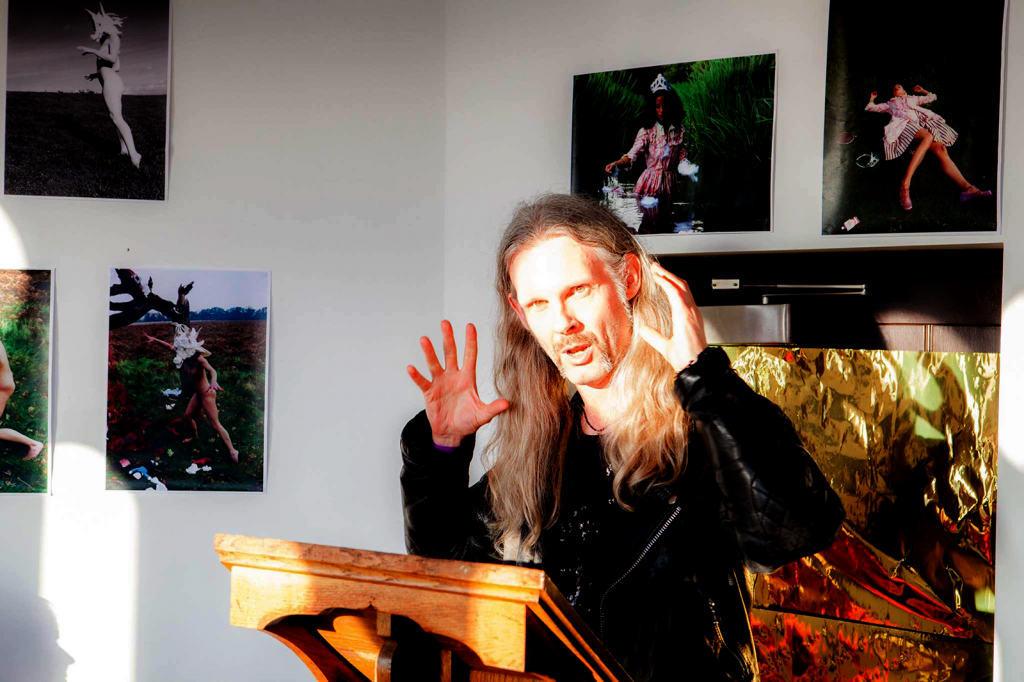
“I don’t know how much you know about this stuff; the whole peace bus in the UK, the battle of the Beanfield at Stonehenge where police smashed up, destroyed buses and a whole community, then you had the Castlemorton Festival which led to the Criminal Justice Bill which is a law in the UK outlawing repetitive beats in public places which basically killed the outdoor bass scene. But when you had that whole scene going in the 90s, you had the club rave kids meeting the hippy travelers, one side being electronic techno music and ecstasy, and the other bringing this kind of like hippy philosophy and ethos and knowledge and it all kind of crossing over. And certainly I think a lot of the kind of Illuminati ideas. Suddenly it became cliché to be referencing the number 23 and something, for one thing.”
I mention to Ben the prevalence of the concept of the Temporary Autonomous Zone, in the rave scene. This idea came from Hakim Bey, a philosopher, who described this concept of a space in which the usual laws did not apply in his 1991 book of the same name.
“Yeah,” says Ben. “And in practical terms that sort of crossed over into the reclaim the streets movement doesn’t it. What they were doing certainly kind of early on, there was a lot of theory behind it and the notion of Temporary Autonomous Zone was very much to do with what they were doing, going into the business area of London and having a big party and stopping the traffic. It wasn’t really a protest. Maybe a protest against business or car culture or whatever but at the same time it was the notion of the Temporary Autonomous Zone. It’s like the Situationist idea of beneath the pavements, the beach and in the heart of the city we can have a party, we can bring flowers, we can have a fete in the middle of the road, and that came out of that sort of politicized and radicalized rave culture. You know, they became the reclaim the streets movement and the anti-road protesters, it’s really the same people who’ve moved on from music just into protesting. They’re outdoors and they’re reclaiming their environment, on a kind of Utopian Situationist principle.”
He describes the recent Occupy as a natural outgrowth of reclaim the streets movement.
“It’s like William Burroughs says,” he tells me. “Artists legislate the world, they’re more powerful than politicians because artists create ideas and politicians just put things into action; good artists come up with something new and put it into the world and that kind of changes things.”
Ben Graham has joined forces with a number of other co-conspirators to be part of a contemporary Discordian celebration—Festival 23—that in part formed itself through the energies of the motley crew that came together for the ‘Conferestival’ that marked Daisy Eris Campbell’s opening of Cosmic Trigger. Festival 23 hosted a giant artwork by Jimmy Cauty—an industrial container filled with an epic post-riot miniature landscape. Ben Graham provided the writing on a leaflet that accompanied the artwork:
Both festivals and riots aspire towards freedom; both ultimately are only temporary negations of a stultifying status quo, but may lead to more long-term solutions catalysed by their unfettered expression of energy, anger, love and/or ecstasy. There is freedom in the heart of a riot; a wild abandon and a sense that suddenly anything is possible. Do what thou wilt is quite literally the whole of the law, for the law as defined by policemen, judges and politicians is shown to have no empirical natural authority. It is an assumed condition imposed by those temporarily in power, and can be overthrown both within and without by the will of the people, if only for a limited time and space. But if it can be done once, even for a few seconds, can such glorious lawlessness not be achieved again?
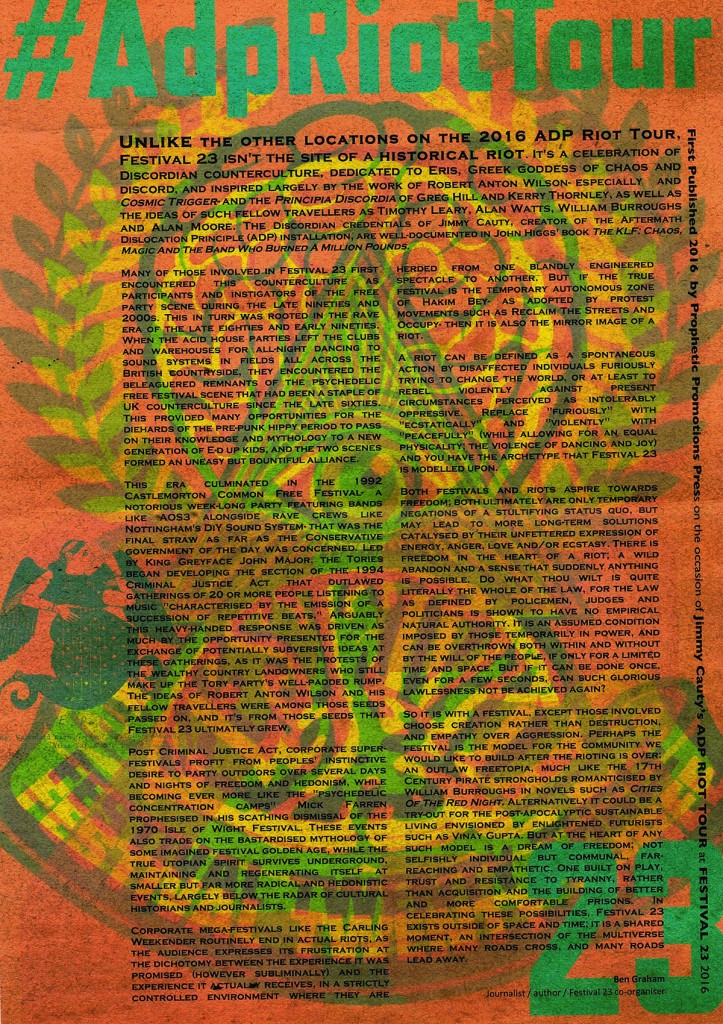
So did chaos jump from magic manual to comic book, find itself in fiction, transferred to stage before implanting itself in the minds of future pop superstars, whose rave hits implanted it into the culture of rave, and ultimately protest and party culture?
Well, of course not—such a story is far too clean for the messy madness that is chaos. But if there’s a lesson here, it’s that every strange step of history sets off another twenty-three steps in all sorts of directions. With so many chaotic steps bouncing off each other, how long do you think it will be before you too have the pleasure of being plunged into chaos?
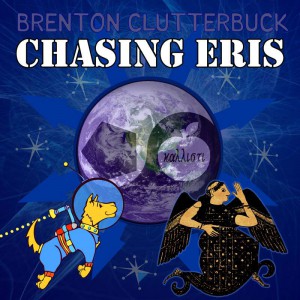
My forthcoming book Chasing Eris will be released next month. The book documents my worldwide adventure to experience modern Discordian culture, meet its personalities, and the discovery of many elusive Erisian mysteries.
—Brenton Clutterbuck